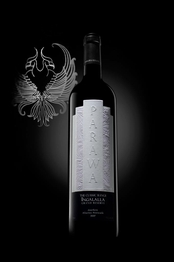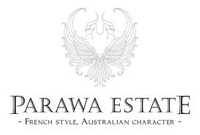A number of years ago, on my first trip to Australia, I heard talk about the social phenomenon known as the “Tall Poppy Syndrome,” a form of unspoken public disapproval of anyone attempting to stand out in his or her field, above the crowd. The so-called “Tall Poppies” (first to be chopped for harvest in an old proverb) were often resented, although I’m not sure if the idea continues today.
Recently, Australian Peter Simic, editor and publisher of the Australian magazine Winestate,  sent me a message that he had released a red wine called Parawa that would sell in the United States for an eye-popping $1,100 a bottle, if it was available here. Parawa is sold in Hong Kong and China but not Australia and New Zealand; Simic sees the potential conflict of interest since Winestate magazine reviews other top-end Australian and New Zealand wines.
sent me a message that he had released a red wine called Parawa that would sell in the United States for an eye-popping $1,100 a bottle, if it was available here. Parawa is sold in Hong Kong and China but not Australia and New Zealand; Simic sees the potential conflict of interest since Winestate magazine reviews other top-end Australian and New Zealand wines.
A handful of Aussie reds (Penfold’s Grange, Henschke Hill of Grace) are pushing US $700 a bottle, but could it be that Simic, with the release of Parawa, is the latest Australian Tall Poppy? “Why should the French have all the fun?” Simic quipped about the release of Parawa. [Full disclosure: Peter Simic was the former owner and publisher of Wine & Spirits Buying Guide in the United States (later to become Wine & Spirits magazine) and I was the magazine’s editor for about 18 months in the early 1990s.] After returning to Australia and establishing Winestate in a suburb of Adelaide, Simic bought property on the Fleurieu Peninsula, south of Adelaide and planted a vineyard. His next move was, naturally, to use the grapes for his own wine.
So, why am I writing about an expensive wine that you can’t buy in the United States? There is that Australian audacity combined with an admirable entrepreneurial spirit. Parawa Estate Ingalalla Grand Reserve 2007 Southern Fleurieu Peninsula is a blend of the five Bordeaux red varieties, aged for four years in new and seasoned French oak hogsheads, and then one year in bottle. “French style, Australian character,” is the idea. The Fleurieu Peninsula is better known for Shiraz (McLaren Vale) than Cabernet, although it is just a few hours from Coonawarra, one of Australia’s premier regions for Cabernet Sauvignon.
Then there is the question of provenance for new, high-end expensive wines. In the late 1970s, while manager of the South Australian Wine Bureau, Simic researched the best grape growing areas in South Australia with the hope of one day producing his own wine. The Southern Fleurieu Peninsula showed the most promise, and in 1999 Simic purchased 80 acres in a valley below Parawa.
 Simic’s choice of Parawa for his vineyard seems to have paid off, although only one Parawa Ingalla has been produced in 11 years of grape growing. Since there’s no way to get a bottle of Parawa from South Australia to California, I haven’t tasted the wine. But Drew Noon MW gave the Parawa 2007 4-1/2 stars out of 5, saying it showed an, “Intense sweet berry aroma, fruit driven, intense silky palate.” Andrew Corrigan MW gave the Parawa 2007 the same high rating, saying that it “deserves to be placed among the great Cabernets of the world.”
Simic’s choice of Parawa for his vineyard seems to have paid off, although only one Parawa Ingalla has been produced in 11 years of grape growing. Since there’s no way to get a bottle of Parawa from South Australia to California, I haven’t tasted the wine. But Drew Noon MW gave the Parawa 2007 4-1/2 stars out of 5, saying it showed an, “Intense sweet berry aroma, fruit driven, intense silky palate.” Andrew Corrigan MW gave the Parawa 2007 the same high rating, saying that it “deserves to be placed among the great Cabernets of the world.”
Praise like that feeds into a steady market for high-end red wines with exotic names and glamorous packages. So even at the price (“The price was decided so that Parawa would be tasted against the great Bordeaux First Growths, without fear or favour,” says Simic), Parawa could find an eager audience in the United States. But if you can’t wait and you are traveling in Hong Kong or China, you’ll find Parawa in the best hotels and restaurants.
6
